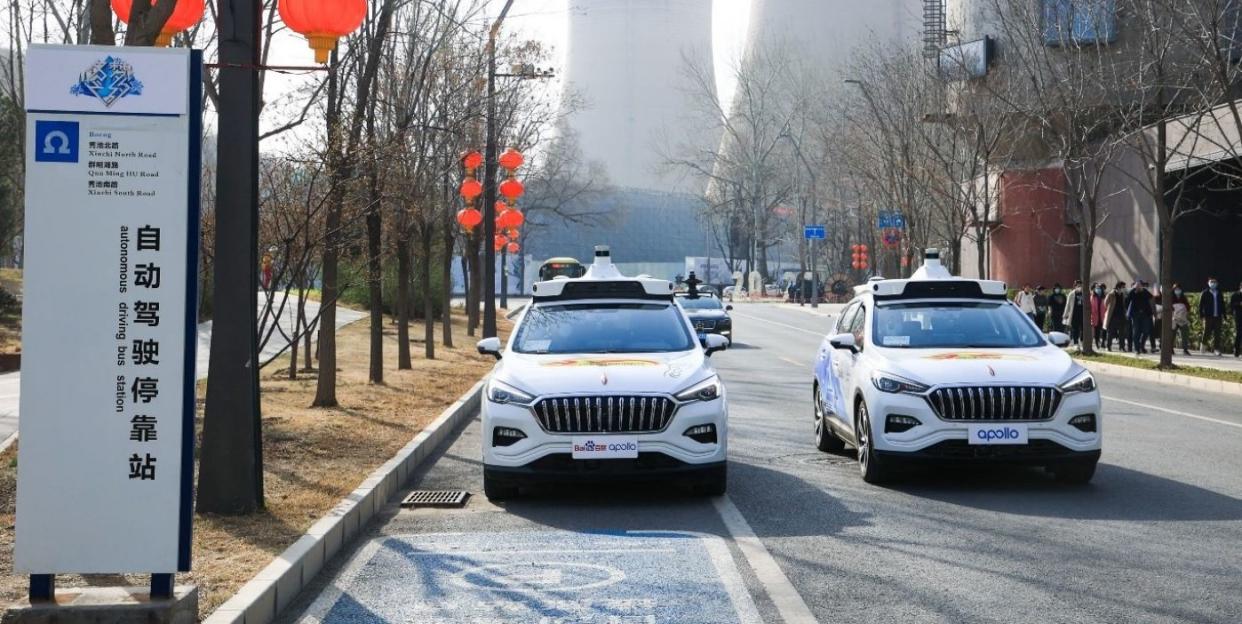Robotaxis Start Servicing Beijing Residents ahead of the Olympics

Baidu launches Apollo Go robotaxis in Beijing in the area of Shougang Park before a wider rollout in time for the Olympics.
A number of developers are currently testing driverless, Level 4 taxis in geofenced areas, but a wider debut remains far on the horizon.
Uber and Lyft have dropped autonomous research units entirely, selling them to cut costs, which indicates how close they think robotaxis really are to wider deployment.
Driverless taxis were launched in Beijing this week, a year ahead of the 2022 Winter Olympic Games, with Chinese internet giant Baidu behind the Apollo Go robotaxi service. The taxis will first operate in Beijing's Shougang Park before the games get going next year, but they're now the first robotaxi service in the country operating commercially.
Riders can use the Apollo Go app to locate a taxi nearby and summon it to their location automatically, and also have to scan a QR code and a health code on the car in order to enter. Once inside, they have to click on the "Start the Journey" button to start the ride. And that's it. There is no backup driver inside, but there is a remote backup driver in case of some emergency.
"Introducing unmanned services is an indispensable stage for the commercialization of autonomous driving. Today, we are opening the fully driverless robotaxi services in Beijing for the public, which we achieved only after conducting countless scalable driverless tests in many cities over a long period of time," said Yunpeng Wang, vice president and general manager of autonomous driving technology at Baidu.
The Apollo Go robotaxi service will roll out on a wider scale in the run up to the Winter Olympic Games, when the taxis will transport visitors and athletes, with Beijing hosting its second Olympics in just over a decade.
"In the future, Baidu Apollo will launch driverless robotaxis in more cities, enabling the public to access greener, low-carbon, and convenient travel services, while continuing to improve the unmanned service process and user experience," he added. "The commercialization of autonomous driving can alleviate congestion effectively and help to reach the peak carbon dioxide emissions and achieve carbon neutrality in China."
Baidu isn't the only company operating Level 4 robotaxis at the moment, as a couple of other developers have introduced service in very limited areas in the past few months. It's fair to say that all current robotaxis in operation remain in very geofenced areas and are likely to expand in very limited fashion in the coming years and months. Even though Baidu's robotaxis and others currently in operation are paid services, it's not the same thing as a profitable service, which is still considered to be in the far future among autonomous developers and ride-hailing apps alike.
In other words, it's one thing to operate robotaxis in a geofenced area, and quite another to actually make money doing so.
It's worth noting that both Uber and Lyft have recently unloaded their autonomous research and development units to third parties, with Lyft doing so just last week in an effort to cut costs—some $100 million a year in Lyft's case. This should give you a pretty good idea of just when ride-hailing apps expect robotaxis to come online in a meaningful scale and when they expect them to actually be profitable—which neither company has been able to accomplish after about a decade with human drivers, either.
Baidu's example of Level 4 autonomy is likely to be very good preview of just the sort of scale we're likely to see robotaxis attain in the next several years: a limited service in a limited area with no goal of immediate profitability for the service itself.
Will we see robotaxis replace human-driven taxis in this decade on any meaningful scale? Let us know your thoughts in the comments below.

